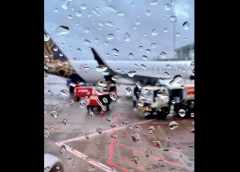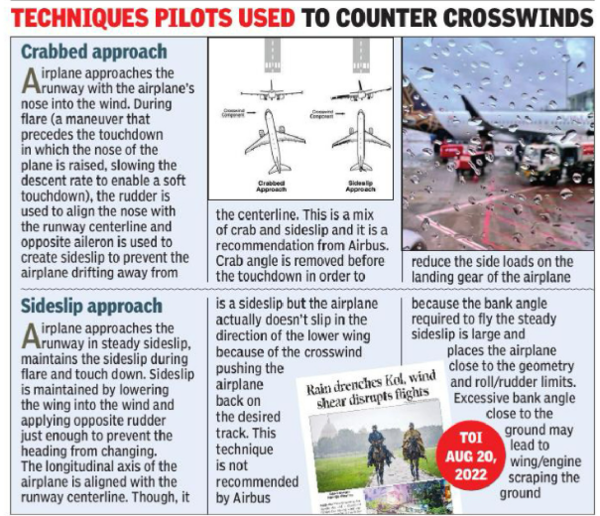
For 90 minutes, 11 pilots made 16 futile attempts to touch down at Kolkata airport | Kolkata News
[ad_1]
A crosswind in aviation parlance is any wind that blows perpendicular to the line or direction in which an aircraft travels. They can move an aircraft away from approach slope in a landing sequence and be a hazard. Altogether, 11 aircraft made 16 attempts to touch down before pulling out of the landing sequence. Over two dozen flights hovered in the sky and nine had to diver to other airports.

Some of the pilots told TOI that despite the warning of strong winds from the airport meteorological office, they were surprised at the intensity of the wind shear and cross winds they encountered while attempting to land at Kolkata airport on Friday evening.
“The winds striking the aircraft from the left caused it to veer away, causing a 20° difference between the axis of the plane and that of the runway. We had to abort landing and hover till fuel distresses forced flights to divert,” a pilot said.
Wind shear and crosswinds aren’t unusual phenomenon between March and May when nor’westers generate strong winds, the primary difference between that and what happened on Friday evening was that while the former lasts for 10-30 minutes, the cross-winds generated by the depression lasted 90 minutes, causing far greater flight disruptions.
Also, when there is a nor’wester warning, pilots rarely attempt to land and opt to hover till conditions improve. But on Friday, attempts by flights to land during the 90-minute period were repeatedly foiled with some like a Vistara Airlines flight nearly touching runway before pulling out of the landing sequence.
“An Airbus A320 aircraft or a Boeing B737 plane can withstand crosswinds up to 40 kmph and gusting up to 75kmph. But on Friday evening, the winds were far more severe with pilots experiencing crosswinds of 93kmph at 1,600ft and 83kmph at 900ft. It wasn’t possible to stabilise the approach and alight the aircraft with the runway. The problem was not just aligning with the localiser but also maintaining the vertical profile of the aircraft,” a captain said.
While a combination of crosswind and headwind that happens when the wind blows in the north-westerly or south-westerly direction as an aircraft comes in to land from north to south is manageable, pilots find it extremely challenging when the combination is crosswind and tailwind. That was what happened on Friday when the winds blew in the south-westerly direction as the planes attempted to land from the Madhyamgram end or north of the airport.
[ad_2]
Source link


